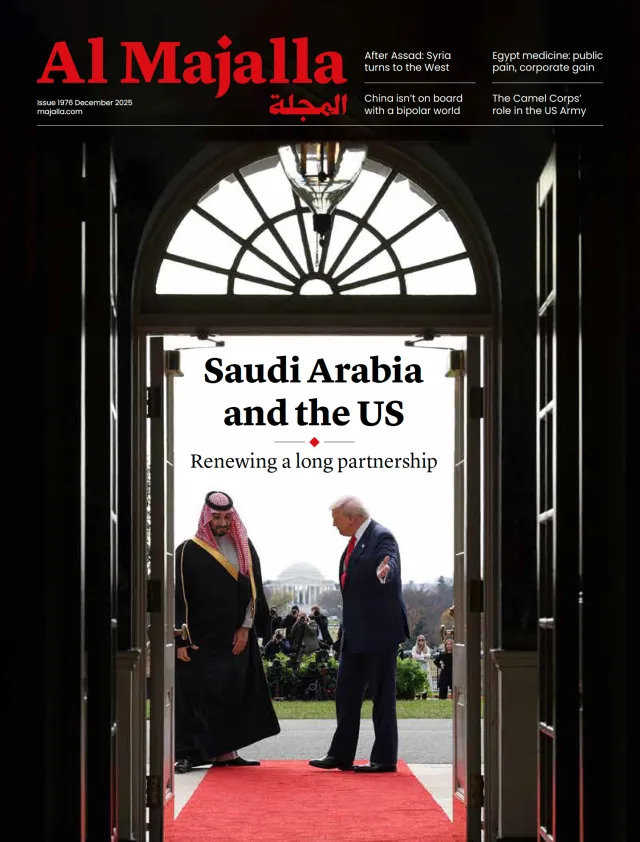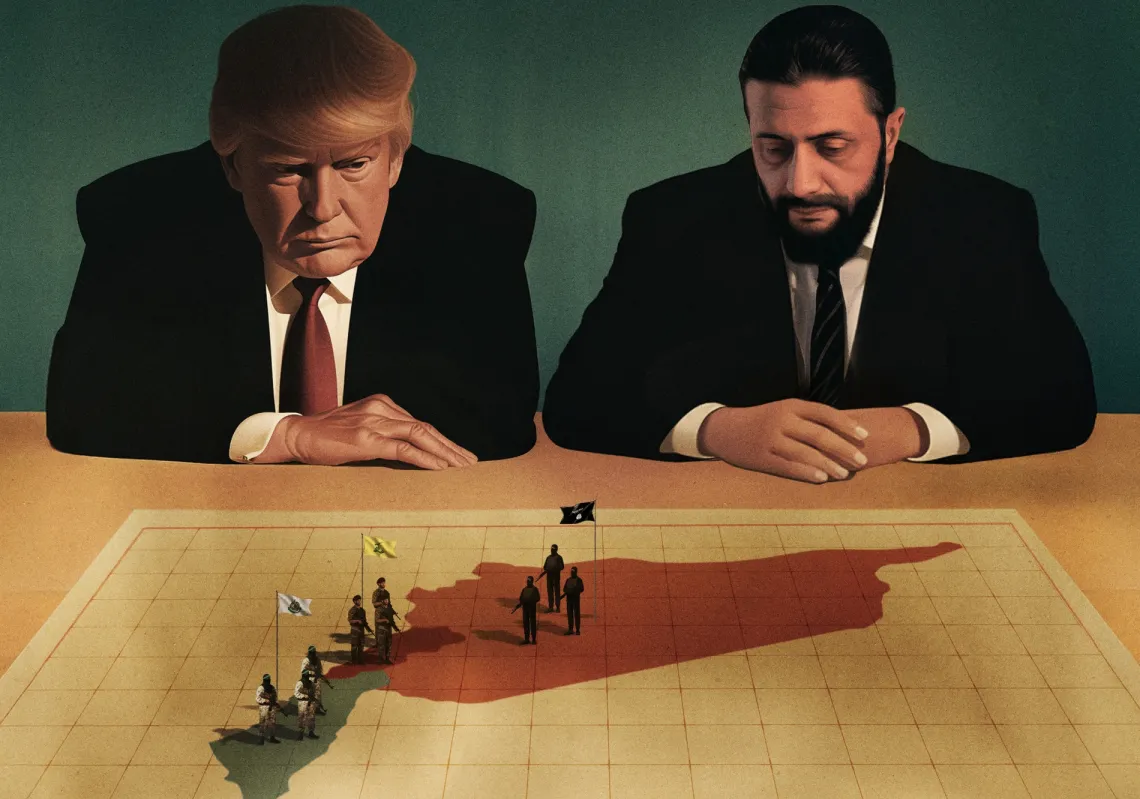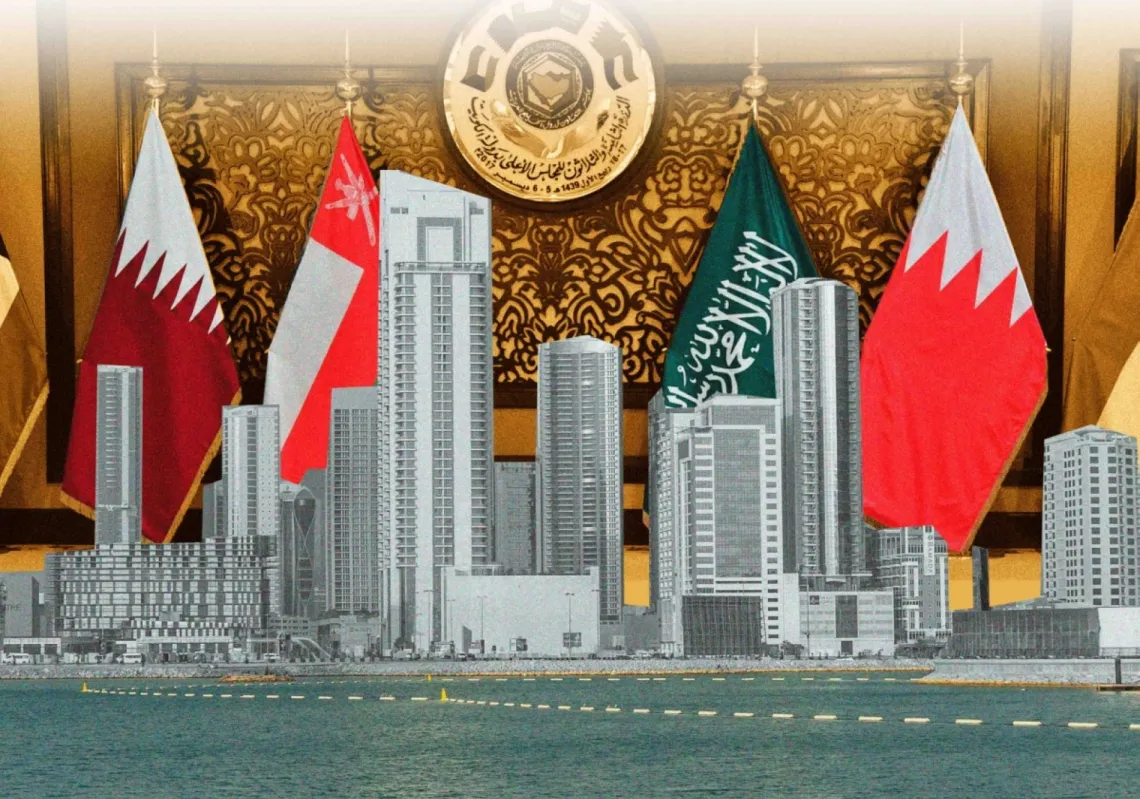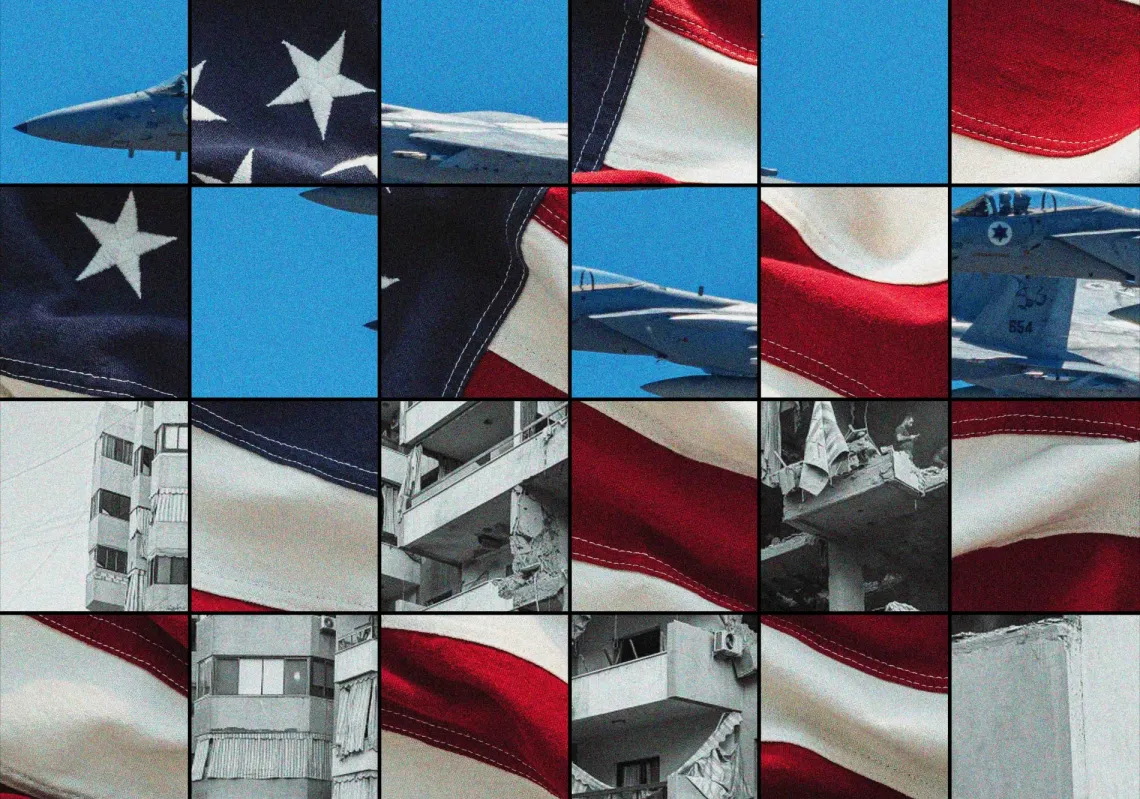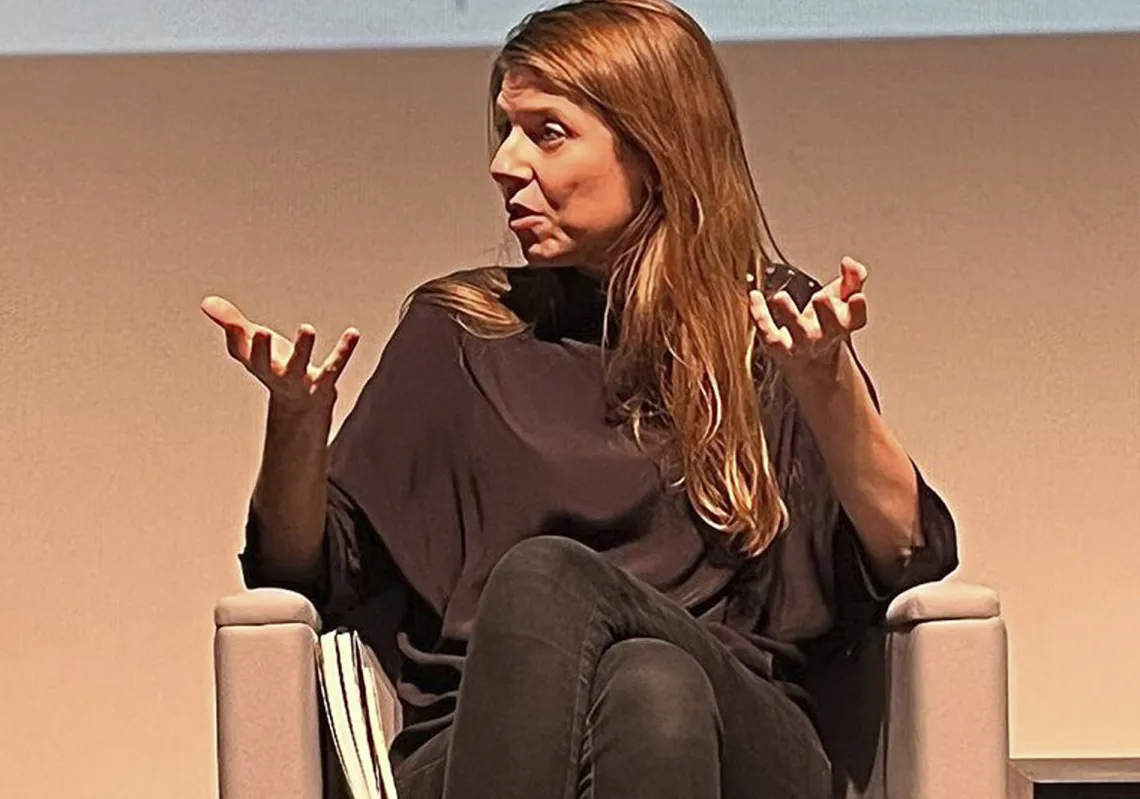The debut work of Saudi film director Samaher Mously uses dark comedy to highlight how modern women are expected to conform physically in Rouge, a short film that explores the social impact of the beauty and cosmetic surgery industry.
Following a TV presenter approaching the age of 40 is a narrative device used to explore challenging contemporary issues about appearance and identity. The film’s title is a reference to a common colour of lipstick. It is also a metaphor for preoccupation with beauty.
It premiered at the 2024 Carthage Film Festival in Tunisia, and Mously spoke to Al Majalla about the ideas behind the film, how it was made, and her own story.
What inspired you to make Rouge and explore the issues within it?
The idea stemmed from a conversation with my friend Dana Al Qusaibi, who is also the film’s protagonist, about the immense pressure on women to look a certain way, society’s obsession with youth, and the booming Botox and filler industry.
I was shocked to learn about the side effects of Botox and about how little awareness there is about the health risks. Botox is essentially a toxin and works by paralysing muscles to prevent movement. Thousands of women experience severe side effects that are far more harmful than commonly acknowledged.
That said, I did not want the film to feel like a government awareness campaign. Instead, I wanted to tell a story that reflects the pressures on women regarding their appearance. It is rare to see complex Saudi female characters on screen addressing issues that deeply resonate. That is what I aimed to bring to life through Rouge.
Why did you choose dark comedy to convey your message?
I enjoy dark comedy, especially the subtle, dry style where the humour is implicit and understood through context. It is an artistic approach I deeply appreciate and aim to incorporate into all my work.
Is it easy to live in today’s world, dominated by appearances, without resorting to cosmetic surgery or treatments?
Some women have asked whether I think the film stigmatises those who choose to undergo cosmetic procedures. My answer is no. The film addresses the pressures we all face. It is not easy to live happily in a world dominated by social media filters and actresses who set unrealistic beauty standards after having cosmetic surgery.
It is crucial to be aware of the potential harm these procedures can cause and to feel comfortable enough to have open and honest discussions about these topics.

What were the circumstances surrounding the production of Rouge?
Initially, I secured funding through the production market projects overseen by the Saudi Film Festival. Additional support then came from Centre Frame, a London-based production company, followed by funding from Ithra. The final backing was provided by Telfaz11 (a Saudi creative media studio). This was particularly exciting.
Read more: Ithra’s head of cinema: Saudi stories deserve to be told
Before cinemas existed, we used to watch their videos on YouTube, and I always dreamed of being part of their group of “unique young talents”. Today, I’m proud to be their first female director, and I’m thrilled by their willingness to support and fund films that focus on women and are directed by women.
How did you assemble the cast?
The protagonist, Dana Al Qusaibi, is a close friend of mine. Rahaf Ibrahim (who plays Ola, a friend) and Khalid Yeslam (the cosmetic surgeon) were actors I envisioned while writing the script. Nour Alkhadra (the protagonist’s newsroom colleague) is also a friend and makes a cameo appearance.
I was fortunate to have the support of such talented actors who believed in the script and the film’s concept. The filming lasted three days, and there was exceptional location support from producers Mohammed Alzubaidi and Maan Bin Abdulrahman.
As with any production, challenges arose during filming. For Rouge, a major challenge was shooting in a news studio, which required careful coordination with their broadcasting schedule. On one occasion, we began filming past midnight and had only a few hours to wrap up before the next broadcast.

Turning to you and your background, how would you introduce yourself?
I studied actuarial sciences at university and spent a significant portion of my career working for major corporations, but four years ago, I decided to transition to film. Since then, I’ve had the opportunity to work with the Sundance Institute as a film evaluator for the Middle East region and with the Red Sea International Film Festival in marketing. Rouge is my debut in cinematic storytelling.
Where did your passion for cinema originate?
I can’t say I’ve always been passionate about cinema. My journey with film began just seven years ago in Berlin when I spontaneously picked up a camera and shot a documentary titled One Question. To my surprise, it got over 300,000 views online.
Shortly after, I worked as a videographer, capturing the Hajj season for an online series titled Humans of Hajj. It was during that experience that I discovered my passion for filmmaking and decided to pursue it seriously.
What are your future cinematic projects?
I am currently working on a thriller feature film. I want to present Saudi female characters in ways that the world has never seen before.

